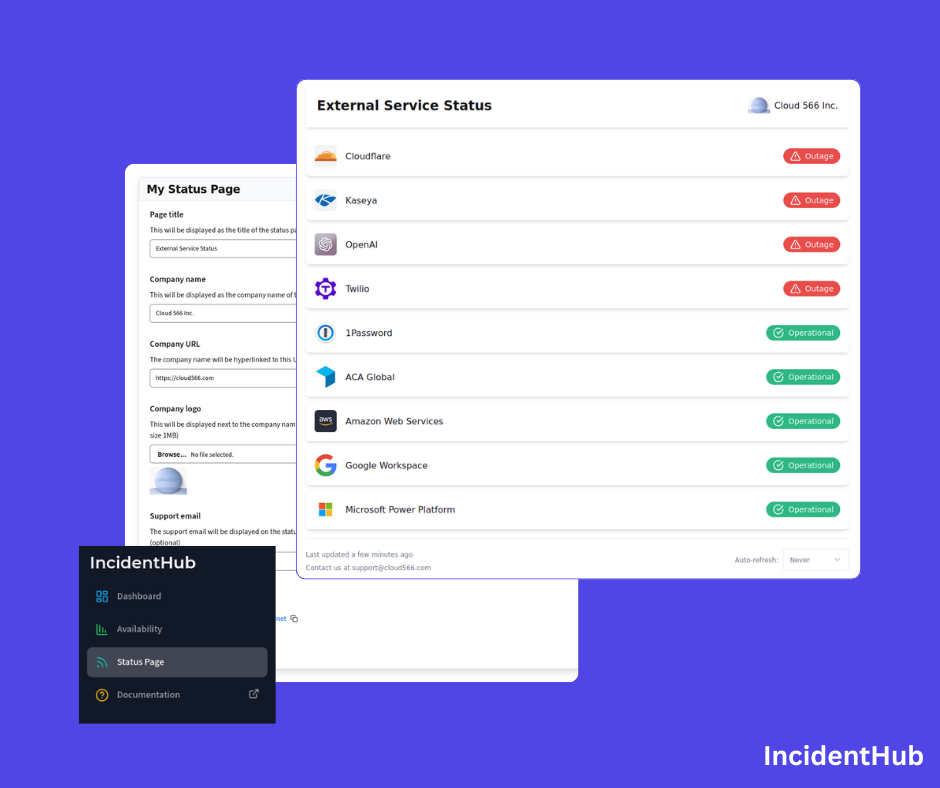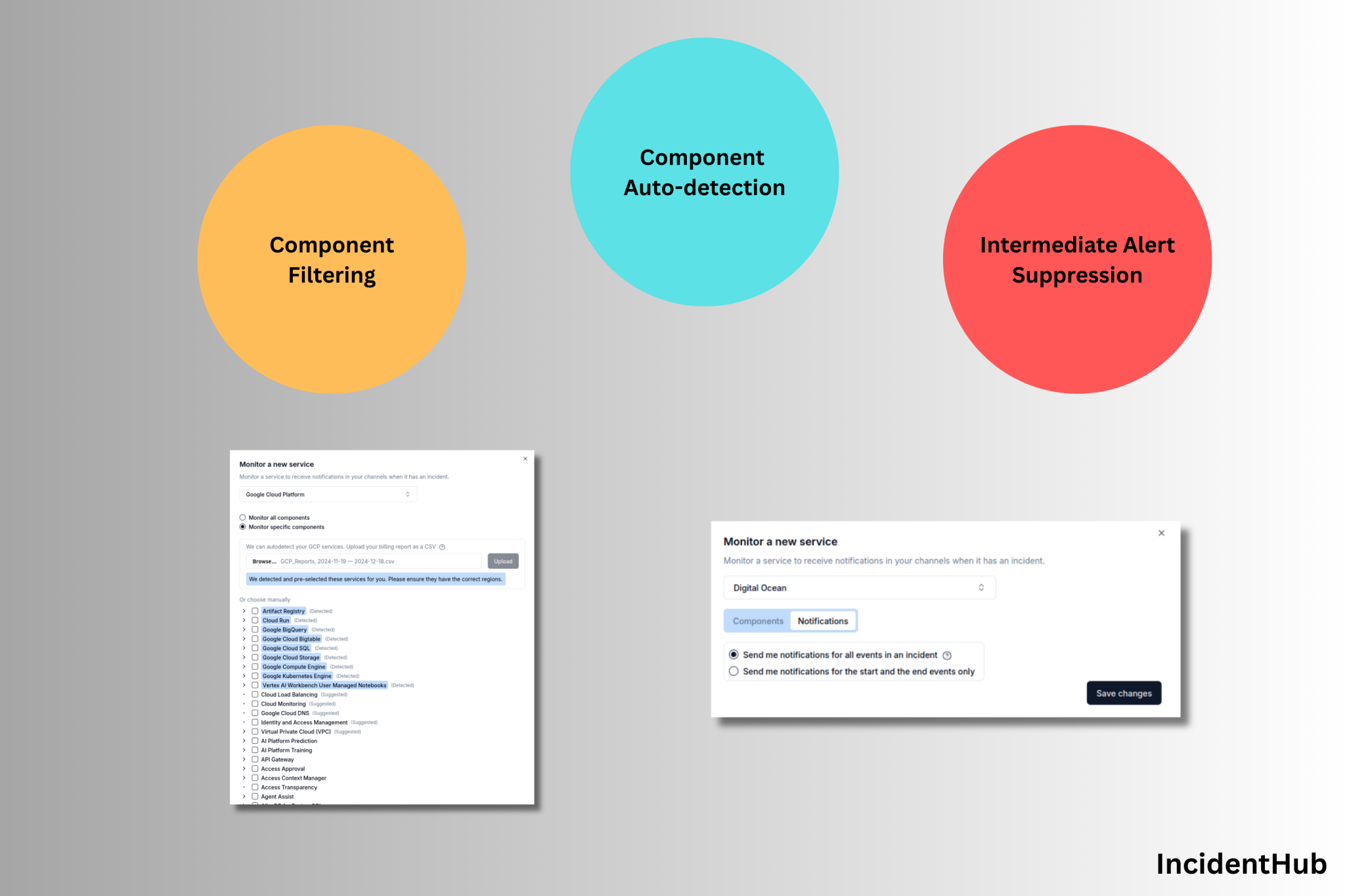Introduction
A status page forms a key part of your incident communication strategy. When it comes to setting up a status page, you have two options:
- Host your own - using either an open source project or a custom solution.
- Use a managed status page provider.
We will examine the pros and cons of each option along these dimensions:
- Feature Set
- Service Related
For 1, if you choose a self-managed, open-source or custom solution, it's in your control. For a managed solution, you are limited by the provider's feature set.
For 2, if you choose a self-managed solution, your team is responsible for the quality of the service. For a managed solution, you are dependent on the provider's service quality.
In most cases, you are better off using a managed solution from a reputed provider, unless you have:
- Specific requirements that are not met by the vendor.
- Budget constraints.







